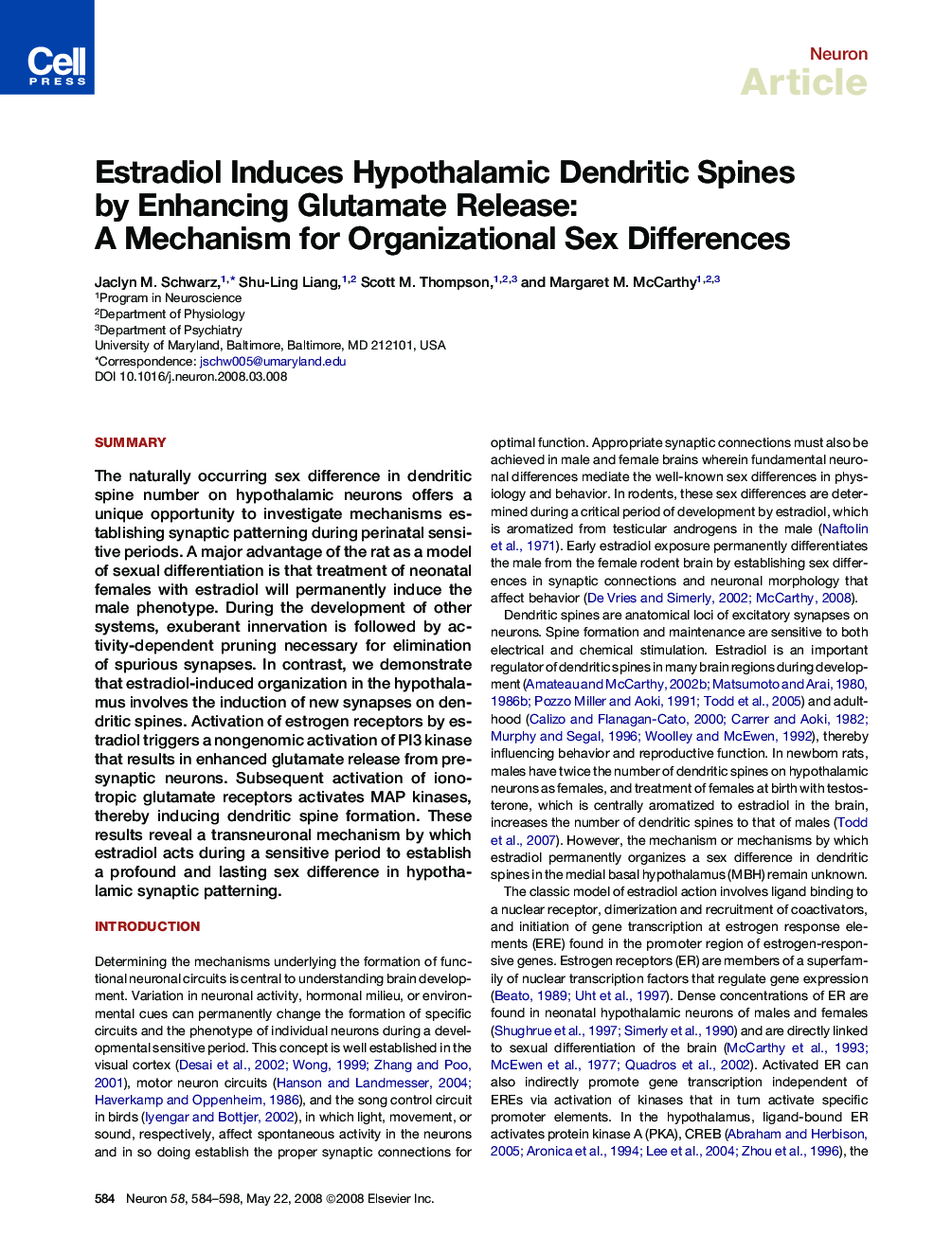| Article ID | Journal | Published Year | Pages | File Type |
|---|---|---|---|---|
| 4322374 | Neuron | 2008 | 15 Pages |
SummaryThe naturally occurring sex difference in dendritic spine number on hypothalamic neurons offers a unique opportunity to investigate mechanisms establishing synaptic patterning during perinatal sensitive periods. A major advantage of the rat as a model of sexual differentiation is that treatment of neonatal females with estradiol will permanently induce the male phenotype. During the development of other systems, exuberant innervation is followed by activity-dependent pruning necessary for elimination of spurious synapses. In contrast, we demonstrate that estradiol-induced organization in the hypothalamus involves the induction of new synapses on dendritic spines. Activation of estrogen receptors by estradiol triggers a nongenomic activation of PI3 kinase that results in enhanced glutamate release from presynaptic neurons. Subsequent activation of ionotropic glutamate receptors activates MAP kinases, thereby inducing dendritic spine formation. These results reveal a transneuronal mechanism by which estradiol acts during a sensitive period to establish a profound and lasting sex difference in hypothalamic synaptic patterning.
